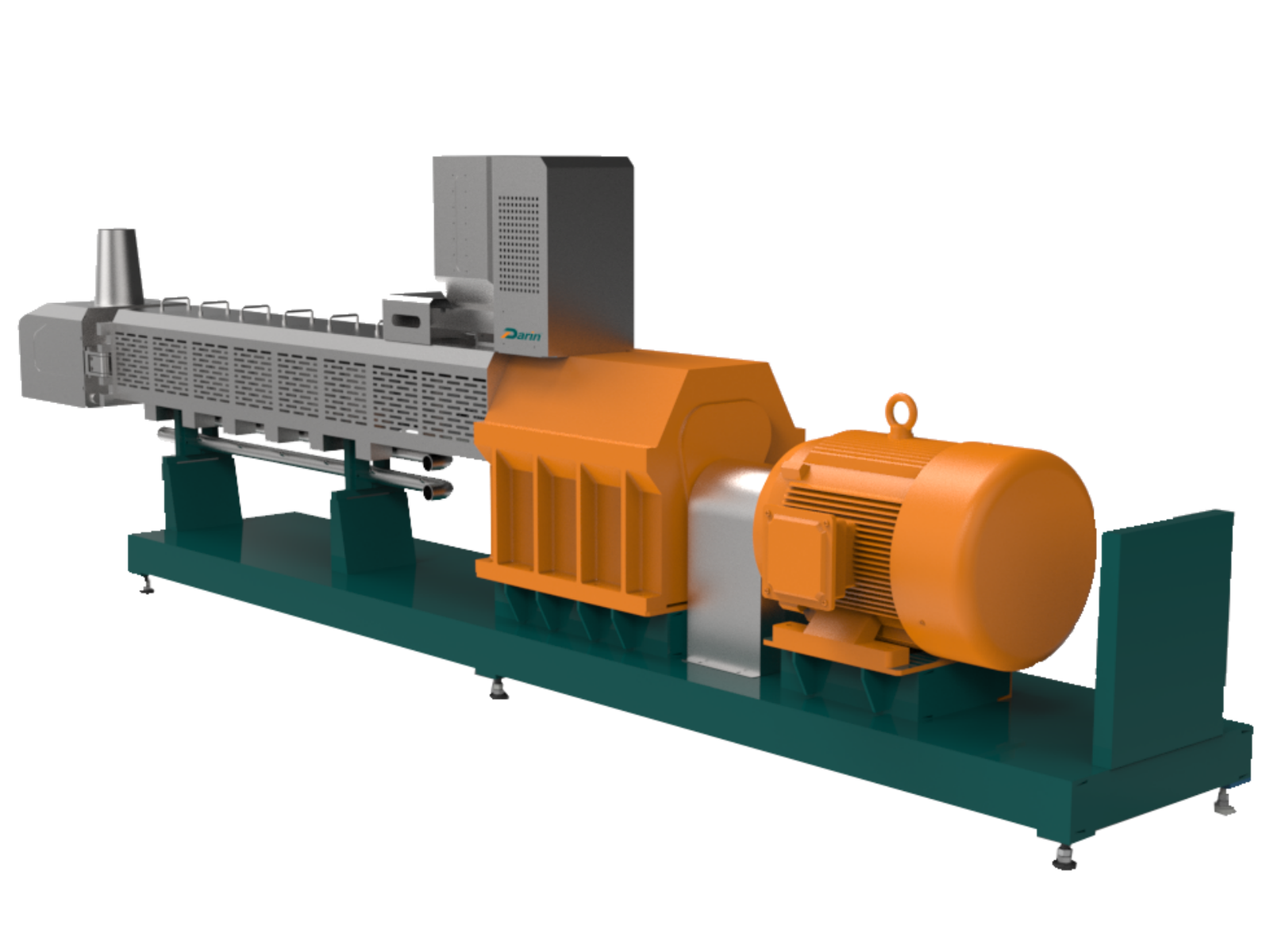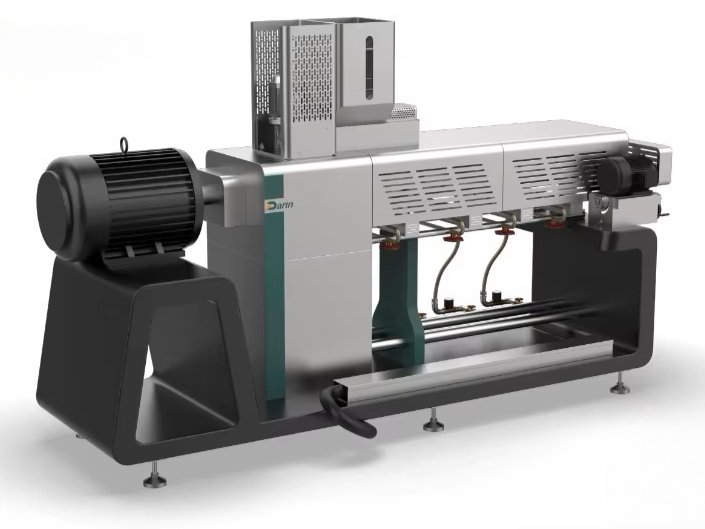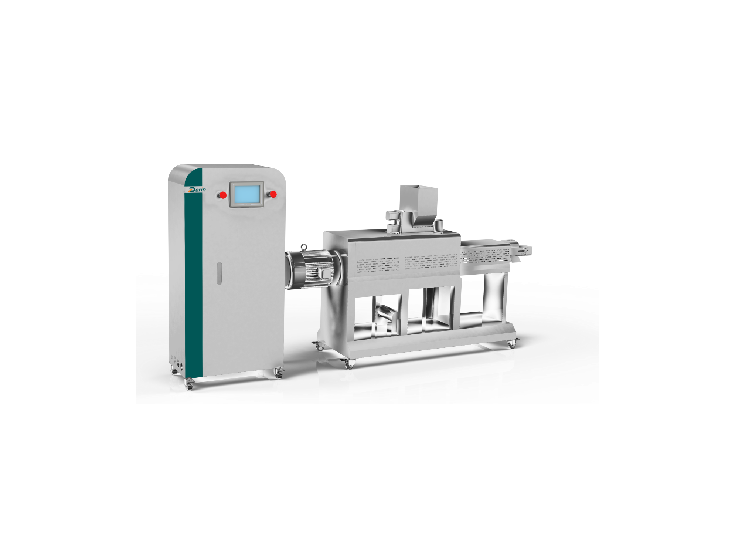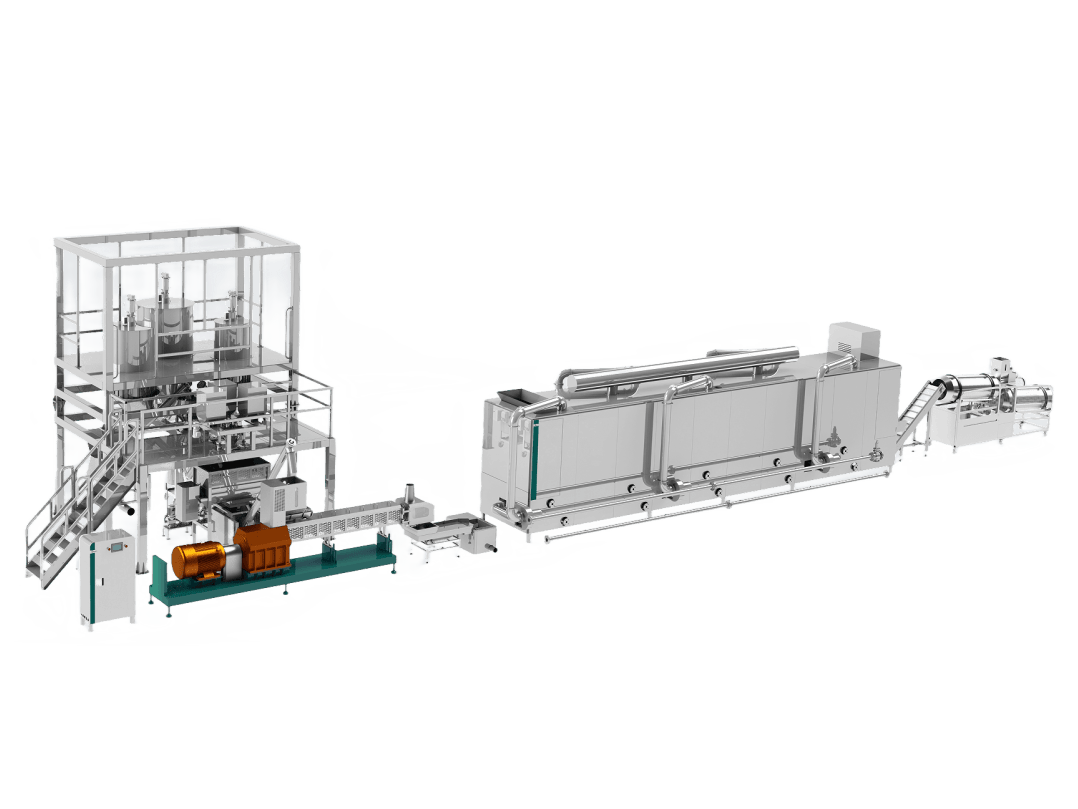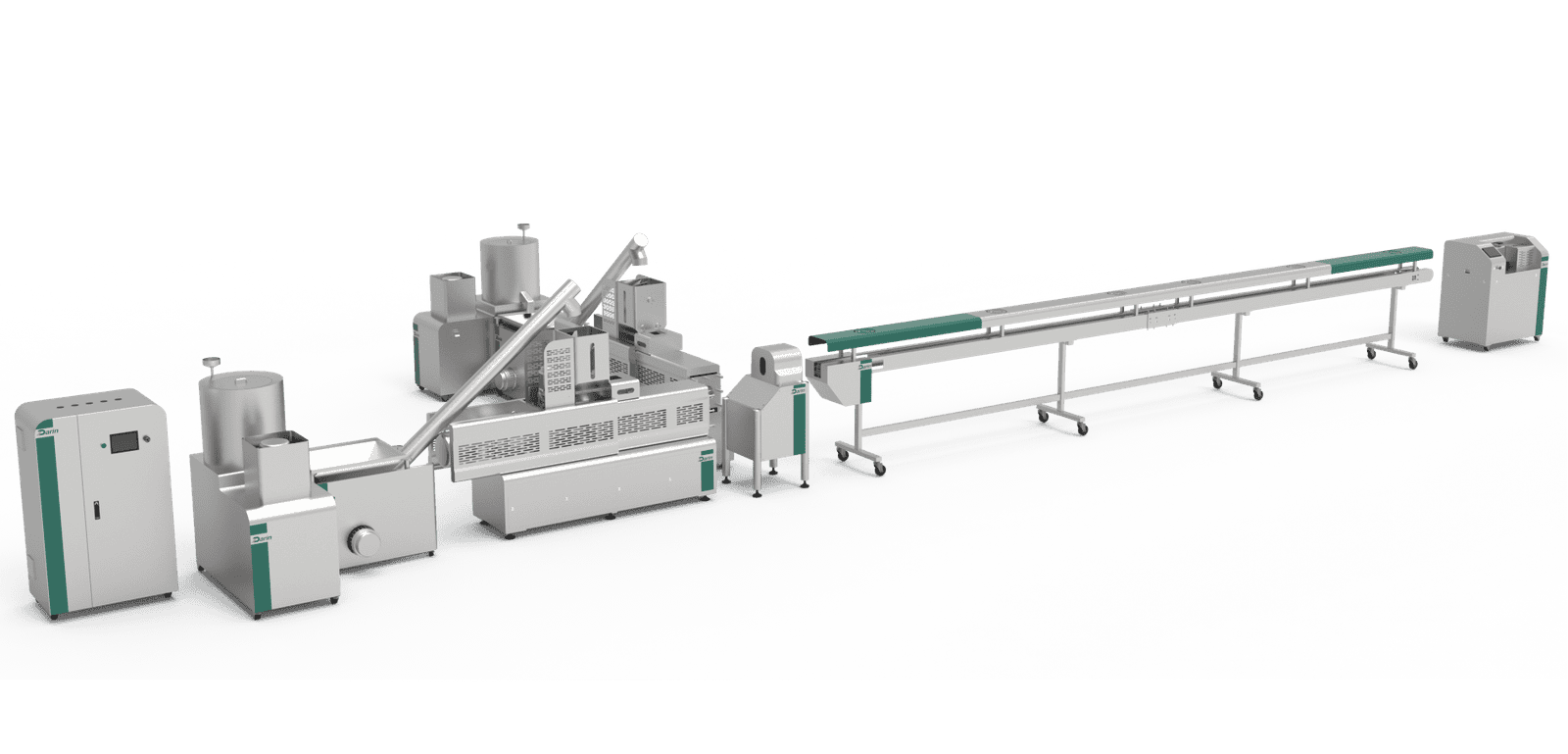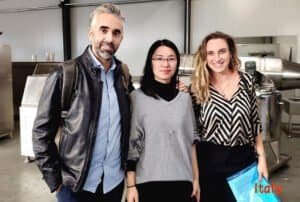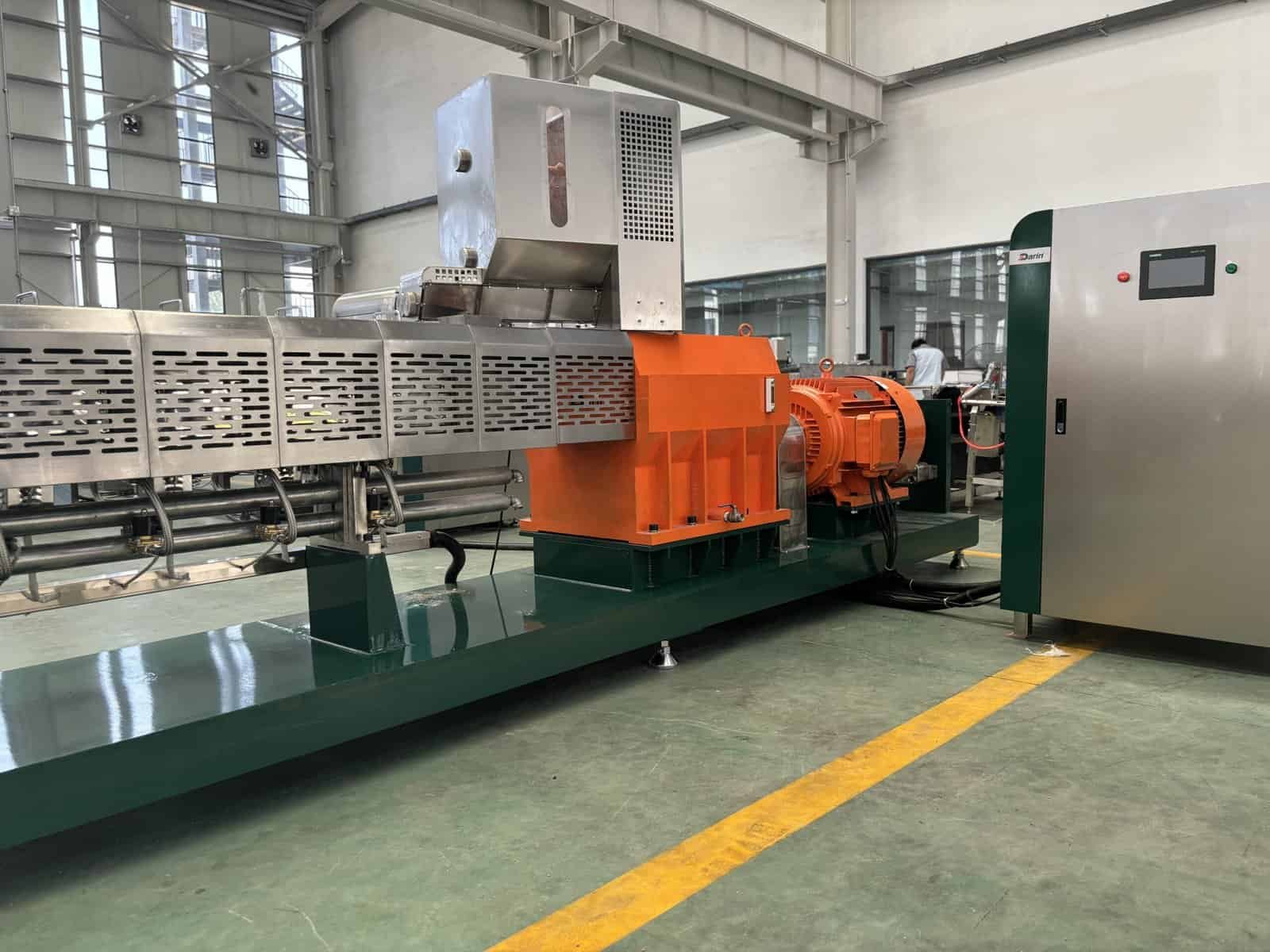
Extruders are central to the manufacturing of plastics, food, pet treats, and more—but many users struggle with understanding how these complex machines actually operate. Without this knowledge, operators may experience material waste, uneven product quality, and costly downtimes. Fortunately, a solid grasp of extruder fundamentals can help both new and experienced users improve productivity, quality control, and troubleshooting. This article breaks down how extruders work, including their core components, technical functions, and practical applications.
An extruder works by continuously pushing raw material (solid, semi-solid, or liquid) through a heated barrel using a rotating screw, which melts, mixes, and pressurizes the material before shaping it through a die to form a specific product shape or texture. This process enables the efficient transformation of materials into consistent, uniform outputs in food, plastic, and industrial applications.
Understanding this process is essential for industries that require stable, high-output machinery. Whether you’re producing puffed snacks, pet chews, biodegradable packaging, or plastic pipes, the principles of extrusion remain consistent—yet the machine configuration varies to suit the material and final product. Let’s explore this in-depth to help you maximize your extrusion line’s performance.
\
Extruders operate by melting and forcing material through a die using a rotating screw.True
This is the fundamental operating principle of single- and twin-screw extruders used in food, plastic, and industrial production.
🔧 Core Components of an Extruder
The functionality of any extruder revolves around a few essential parts:
| Component | Function |
|---|---|
| Feeding System (Hopper) | Introduces raw material into the extruder. |
| Screw (or Screws) | Rotates to convey, compress, and mix material. |
| Barrel | Encloses the screw and contains heating zones. |
| Heaters & Thermocouples | Regulate temperature to control melting. |
| Die | Shapes the final product as material exits. |
| Motor & Gearbox | Powers the screw’s rotation. |
| Control Panel | Manages temperature, speed, and pressure. |
There are two primary types of extruders: single-screw and twin-screw. Each has a distinct structure and operational advantage, which we will explore in technical depth.
🔄 Step-by-Step: How the Extrusion Process Works
1. Feeding and Conveying
Material enters the extruder through the hopper, where gravity or forced feeding introduces it into the screw channel. In twin-screw extruders, the intermeshing screws improve feeding, especially for low-bulk density powders or sticky formulations.
Key Variables:
- Feed rate (kg/h)
- Bulk density
- Moisture content (for food)
2. Melting and Compression
As the screw turns, friction and barrel heaters gradually raise the material’s temperature. The compression zone reduces channel depth, increasing pressure and causing melting. In food extruders, this also initiates starch gelatinization.
Screw Profile Example:
| Zone | Description |
|---|---|
| Feed Zone | Large channels to convey solids. |
| Compression Zone | Reduced volume to build pressure. |
| Metering Zone | Ensures uniform flow and pressure. |
3. Mixing and Homogenization
Twin-screw extruders often include kneading elements and reverse flights for intensive mixing, essential for compound uniformity. Additives, flavors, or fillers can be injected here.
\
Twin-screw extruders cannot handle viscous or high-moisture materials.False
Twin-screw extruders are highly versatile and suitable for both low-viscosity and high-moisture formulations.
4. Pressurization and Shaping (Die Head)
The melted material is pressurized and forced through a die that defines the product shape—whether it’s a circular pellet, square noodle, or custom pet treat. In food production, cutting knives rotate at the die face for continuous pellet formation.
Die Types Overview:
| Die Type | Application |
|---|---|
| Slit Die | Flat film, sheet |
| Ring Die | Pipe, tubing |
| Strand Die | Pellets, pet food |
| Shaping Die | Snacks, cereals |
5. Cooling, Cutting, and Conveying
Depending on the application:
- Plastic products are cooled in water baths.
- Food products are cut by rotary blades and conveyed into dryers or cooling tunnels.
- Pet treats may require shaping conveyors and robot-assisted packaging.
📊 Typical Operating Parameters for Extruders
| Parameter | Single-Screw | Twin-Screw |
|---|---|---|
| Throughput (kg/h) | 50–1000 | 100–2000+ |
| Screw Speed (rpm) | 30–150 | 100–600 |
| Temp Zones | 3–5 | 5–10 |
| Max Pressure (bar) | 100–300 | 300–600 |
| Moisture Handling | Low | Wide range |
| Shear Intensity | Medium | Adjustable High |
⚙️ Technical Factors Influencing Extruder Performance
Screw Design
- L/D Ratio (Length to Diameter): Affects residence time and shear.
- Flight depth: Controls volume and pressure.
- Screw elements (for twin-screw): Can be modular for custom mixing.
Barrel Configuration
Zone-specific temperature control is critical for:
- Plastic softening
- Starch gelatinization
- Protein denaturation
Material Rheology
Viscosity, elasticity, and friction coefficient all impact:
- Energy consumption
- Output consistency
- Die swelling
\
Extruder energy efficiency depends solely on motor power.False
Energy efficiency is influenced by screw design, material viscosity, temperature control, and throughput—not just motor power.
🔍 Applications of Extrusion Technology
| Industry | Common Extruded Products |
|---|---|
| Food | Pasta, snacks, cereals, meat analogs |
| Pet Food | Dry kibble, treats, chews |
| Plastics | Pipes, films, profiles, pellets |
| Pharmaceuticals | Controlled-release tablets, carriers |
| Biomaterials | Bioplastics, bio-composites |
| Textiles | Synthetic fibers, filaments |
📈 Case Example: Pet Food Extrusion with Twin-Screw
Parameters for Dog Kibble Production
| Setting | Value |
|---|---|
| Raw Moisture | 25% |
| Screw Speed | 450 rpm |
| Barrel Temp Zones | 6 (80–150°C) |
| Final Moisture | 8–10% |
| Throughput | 1000 kg/h |
Features of twin-screw extrusion for pet food:
- Precise control of shape and density
- Easy integration of protein, vitamins
- Rapid recipe changeovers
- High sanitation standards (CIP ready)
📌 Conclusion
Extruders operate as highly engineered systems that combine mechanical, thermal, and chemical forces to shape and transform materials in continuous production environments. By understanding each functional zone—from feed to die—you can dramatically improve process control, product quality, and operational efficiency. Whether using single-screw models for basic tasks or twin-screw machines for high-mix, high-output needs, mastering extruder operation is essential in modern manufacturing.
📣 Need Help Choosing or Operating an Extruder?
Darin Machinery specializes in customized food and pet treat extrusion solutions. We offer turnkey systems, modular twin-screw platforms, and expert support from formulation to installation. Contact us today for tailored guidance and equipment quotes.
5. FAQ
H2: Frequently Asked Questions
H3: What is the working principle of an extruder?
An extruder operates by feeding material into a heated barrel, where a rotating screw melts and pressurizes the substance before shaping it through a die. This continuous process ensures high-output manufacturing of consistent products across various industries.
H3: What are the main components of an extruder?
The core components include the hopper (feeding system), screw(s), barrel, heaters, die, motor, and control panel. Each plays a critical role in moving, melting, and shaping the material during the extrusion process.
H3: How is a twin-screw extruder different from a single-screw extruder?
A twin-screw extruder uses two intermeshing screws for better mixing, pressure control, and material flexibility, especially with complex or moist ingredients. It offers higher shear, modular customization, and greater precision than single-screw models.
H3: What materials can be processed in an extruder?
Extruders handle a wide range of materials including plastic resins, starches, proteins, bio-composites, pet food blends, and pharmaceutical compounds. Selection depends on screw design, temperature control, and the intended product form.
H3: Why is die design important in extrusion?
The die determines the final shape and quality of the product. Different die types—such as slit, ring, strand, or shaping—enable the production of films, pipes, pellets, or shaped snacks, directly affecting performance and application suitability.
6. References
- What is Extrusion? - https://www.bpf.co.uk/plastipedia/processes/extrusion.aspx - British Plastics Federation
- Twin-Screw Extruder Technology - https://www.clextral.com/en/extrusion-systems/twin-screw-extrusion/ - Clextral
- Understanding Plastic Extrusion - https://www.ptonline.com/knowledgecenter/plastics-technology-plastics-processing-extrusion - Plastics Technology
- Extrusion of Pet Foods - https://www.sciencedirect.com/topics/agricultural-and-biological-sciences/extrusion - ScienceDirect
- Principles of Extrusion - https://www.sciencedirect.com/book/9781893997934/principles-of-extrusion - Elsevier
- Types of Extruders - https://www.rdmag.com/article/2014/08/understanding-extruders-and-types - R\&D World
- Die Design for Extrusion - https://www.azom.com/article.aspx?ArticleID=16013 - AZoM
- Extrusion in Food Processing - https://www.ifst.org/lovefoodlovescience/resources/food-manufacturing/extrusion - Institute of Food Science & Technology
- Twin-Screw Extruders for Pharmaceuticals - https://www.pharmtech.com/view/twin-screw-extrusion-continues-evolve - Pharmaceutical Technology
- Energy Efficiency in Extrusion - https://www.researchgate.net/publication/343503764 - ResearchGate


